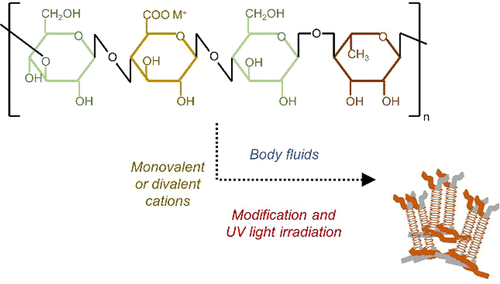Fabrication Methods and Form Factors of Gellan Gum-Based Materials for Drug Delivery and Anti-Cancer Applications

Despite the success of cancer therapeutics, off target cell toxicity prevails as one of the main challenges of cancer treatment. Exploration of drug delivery methods is a growing field of research, which involves a variety of materials and processing techniques. A natural polymer, gellan gum presents physicochemical properties that enable drug loading for sustained release in a broad range of environmental conditions and anatomical locations.
Gellan gum is an anionic exopolysaccharide, produced via fermentation by Sphingomonas elodea, which gels in the presence of cations. Additionally, it is biocompatible and nontoxic. Multiple physical and chemical gelation processes have been reported for the use of gellan gum in drug delivery applications to produced varying form factors, including hydrogels, nanohydrogels, beads, films, or patches, with tunable mechanical and physicochemical properties.
The resulting formulations have shown promising outcomes for drug delivery including improving drug bioavailability, drug solubility, and drug release over time, without compromising biocompatibility or the introduction of adverse effects. This review presents studies in which gellan gum has been processed to enable the delivery of antibiotics, antiallergens, anti-inflammatory, or antifungal molecules with a special focus on drugs for anticancer applications.
Article information: Carolina Villarreal-Otalvaro and Jeannine M. Coburn. ACS Biomaterials Science & Engineering Article ASAP. DOI: 10.1021/acsbiomaterials.1c00685

